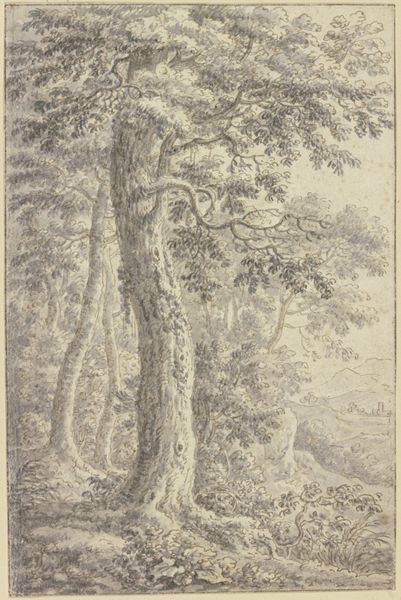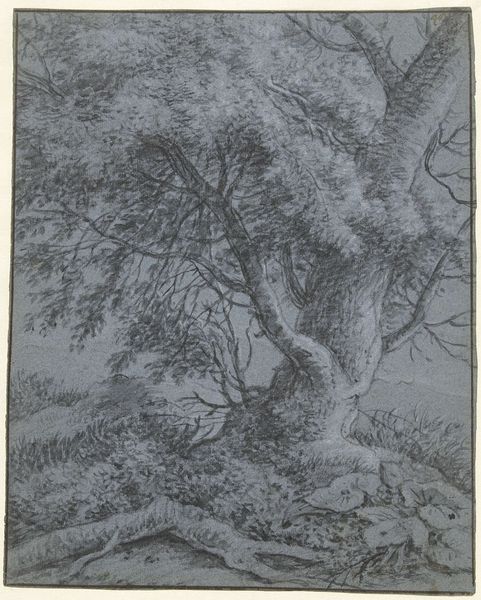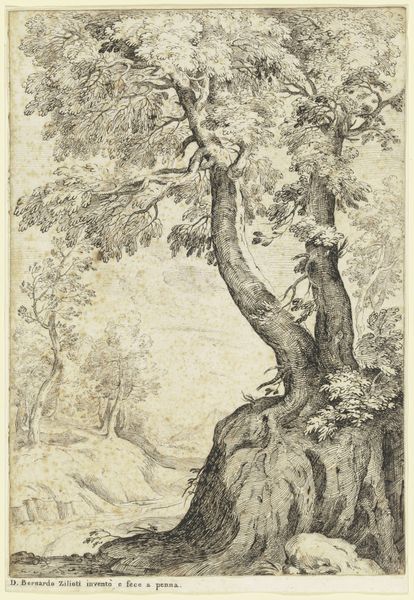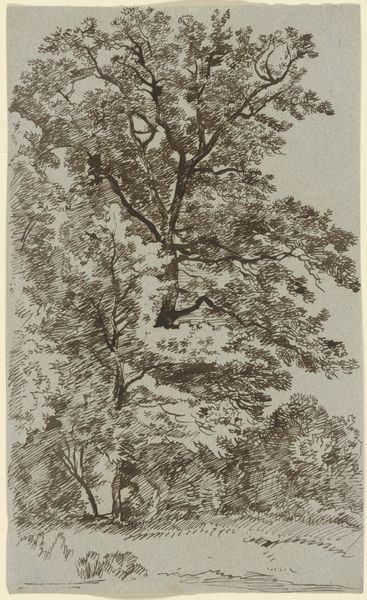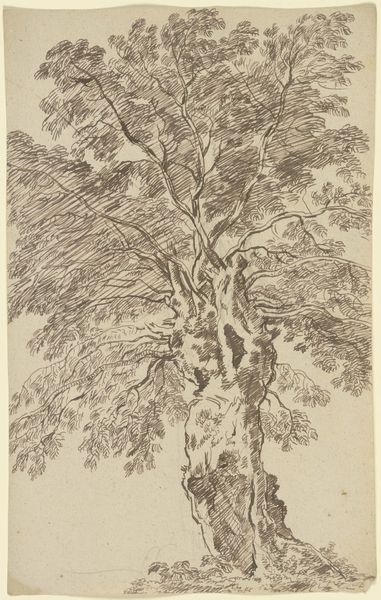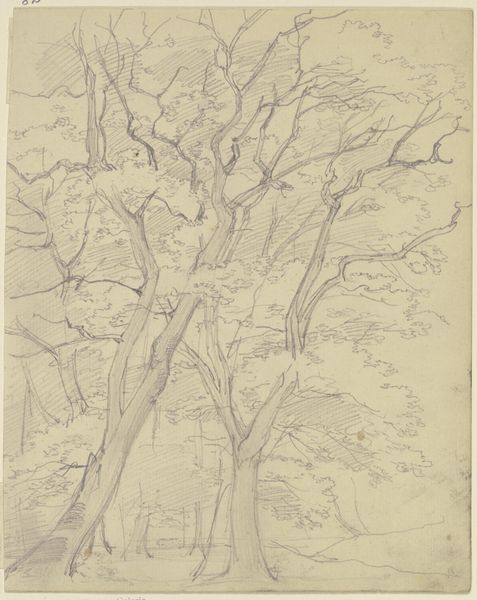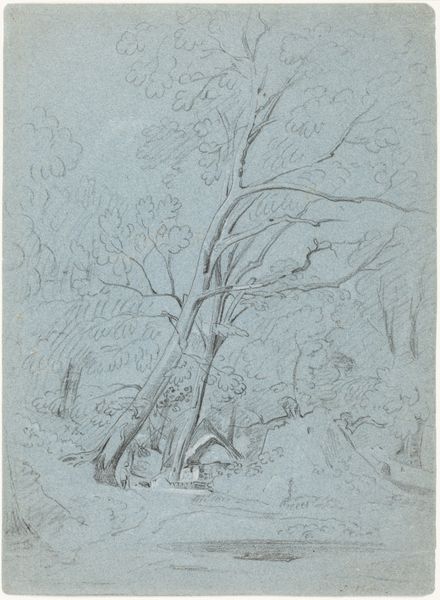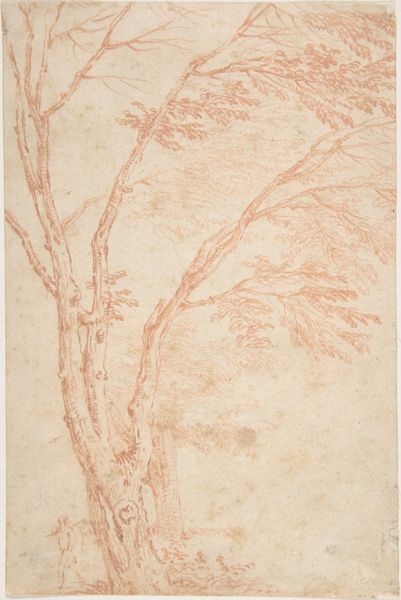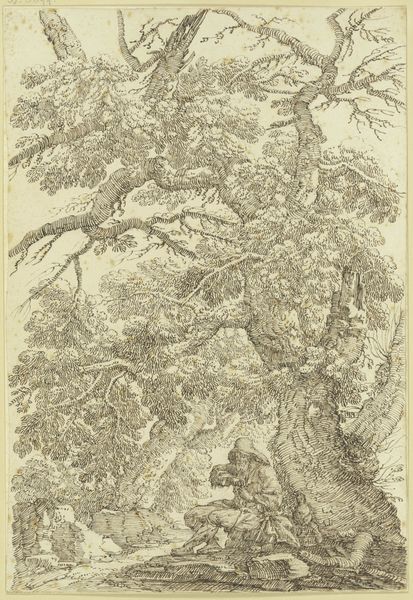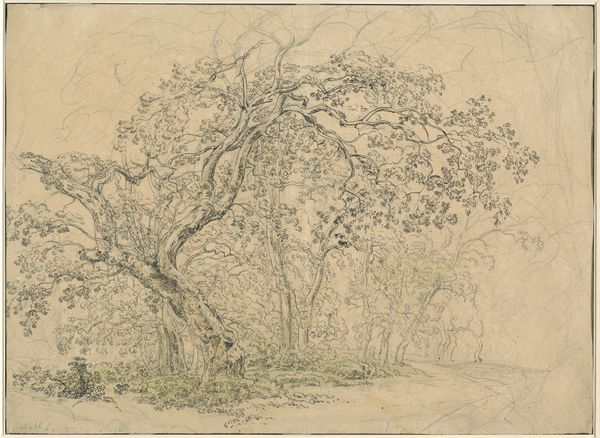
drawing, paper, ink, pen
#
drawing
#
baroque
#
landscape
#
paper
#
ink
#
15_18th-century
#
pen
Copyright: Public Domain
Editor: Here we have "Dichter Buchenwald mit Schlingpflanzen," a drawing by Balthasar Anton Dunker. It's rendered in pen and ink on paper, creating a highly detailed woodland scene. I'm struck by how immersive it feels; the density of the foliage is quite overwhelming. What can you tell me about it? Curator: Well, immediately I see a dialogue between the "high" art of landscape drawing and the everyday reality of resource extraction. The artist meticulously renders these trees, perhaps destined for lumber. The paper itself – a processed material, and the ink used to render the scene speak volumes about resource and labor. Where did the paper come from? Editor: That's interesting, I hadn't considered the resources used to create the piece. Does the artist's technique reinforce your idea? Curator: Precisely. Look closely at the mark-making. Dunker employs repetitive, almost mechanical strokes to delineate the leaves and bark. The forest depicted is simultaneously a source of aesthetic inspiration and a commodity waiting to be transformed. The dense marks represent labor! Editor: So you are saying the drawing transcends its beauty to highlight the human interventions embedded within the natural world? Curator: Precisely. The “naturalness” is deceptive. The work's existence, its creation using ink and paper, points to specific industries and global networks which are anything but "natural" or organic. It asks us to look beyond surface representation. Editor: I never would have looked at a landscape drawing with a materialist lens before, it really adds another dimension to appreciating the artwork. Thanks for opening my eyes to the process. Curator: Absolutely. It’s essential to consider how raw materials are transformed through human agency and shaped by larger socio-economic structures.
Comments
No comments
Be the first to comment and join the conversation on the ultimate creative platform.
